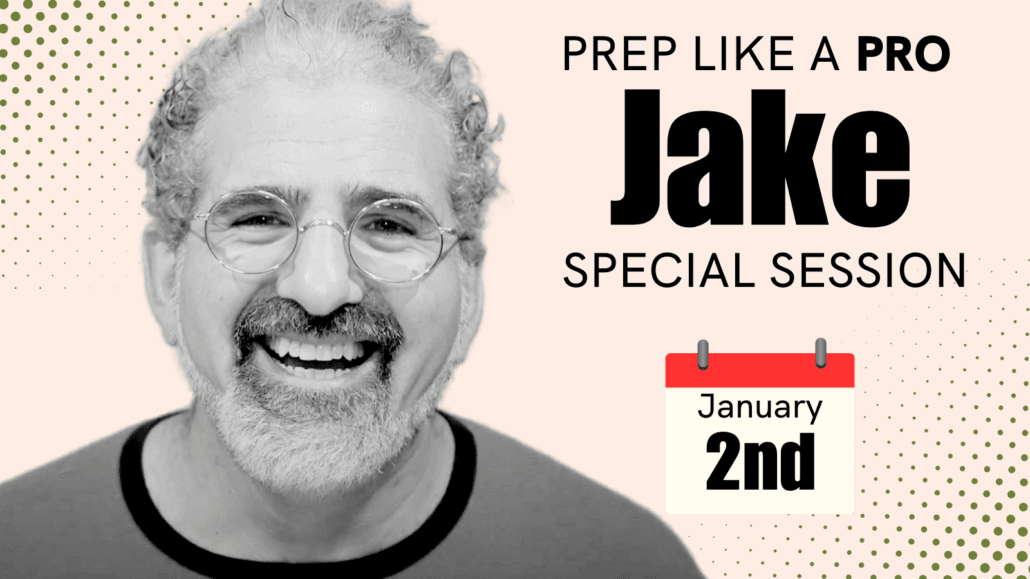[spb_text_block pb_margin_bottom=”no” pb_border_bottom=”no” width=”1/1″ el_position=”first last”]
Writing The Horror Movie: The Inner Psychology of Se7en, Drag Me To Hell & Dawn of the Dead
By Jacob Krueger
[/spb_text_block] [divider type=”thin” text=”Go to top” full_width=”no” width=”1/1″ el_position=”first last”] [blank_spacer height=”30px” width=”1/1″ el_position=”first last”] [spb_text_block title=”EXCERPT” pb_margin_bottom=”no” pb_border_bottom=”no” width=”1/1″ el_position=”first last”]
There are two kinds of horror movies.
There’s the basic gross-out horror movie, which is really just about creating a progression of increasingly horrible images and getting a high body count. These movies have a very simple formula: Establish a bunch of characters and relationships, then kill those characters off, one by one, with the greatest efficiency and bloodiness. All the creative work in those movies just goes into creating the most horrible of horrors. It’s about making the most disgusting, horrible, frightening, “This is going to haunt me in my dreams; I can’t unsee that” kind of moment.
But the best horror movies try to do something much bigger. They are either psychological commentaries, political commentaries, or sometimes both.

For example, Dawn of the Dead is actually about consumerism. There’s a reason they’re stuck in a shopping mall. The horror of their situation is really just a metaphor for the horror of consumerism and the way it makes zombies of us all.
This is important because most of us are never going to find ourselves in a real-life horror movie situation. We’re never going to be chased by a zombie, haunted by a spirit, or pursued by a serial killer.
If a horror movie is going to do more than just gross us out, if it’s truly going to scare us in a way that shakes us to our core, it should relate in some way to the experiences of our lives, our real fears and anxieties.
And that becomes a guiding principle for you as a writer. It can help you stimulate your creativity. When you realize, “This is what it’s really about,” you can start to get even more creative about the horror moments.
Se7en is a great example. Se7en is about sin. It just so happens that Se7en has seven of the most gruesome horrors ever shot on film. (Technically, you can argue that Se7en is a cop movie or a thriller or a serial killer movie more than a horror movie.)
But Se7en, despite all its genre elements, despite each crime that grosses you out more than the last one, is actually about sin. Why? Because it’s called Se7en; it’s about the seven deadly sins.
As cool as that hook may be, you don’t want to build a movie like this just around an external hook. I promise you that before Se7en was ever created, 500 other writers also wrote a seven deadly sins movie. It’s not that original of an idea!
But you don’t want it to just be about how a serial killer recreates the seven deadly sins because you’re going to end up writing one more seven deadly sin movie, just like all the others.
If you’re writing a movie like Se7en, you want it to be an exploration of the real role of sin in our lives and who we really are in relation to sin.
That’s where you’re going to find the creativity and the truthfulness that makes your film stand out from the others in the genre.
The thing that makes Se7en a great movie is not that it’s a seven deadly sins movie. The thing that makes it a great movie is that it’s a movie about sin. It’s a movie that asks the question, “Are the sinners different from us? Do we all carry sin within us? Are we all capable of true evil?”

If you think about Se7en, you realize that’s actually the structure of the main characters’ journeys. There are two main characters, played by Brad Pitt and Morgan Freeman, and they go on parallel journeys.
Morgan Freeman’s character, Somerset, begins the movie believing the world is full of sin and there is no difference between “us” and “them” — the sinners and the innocent. He’s an old man who has seen so much horror in his life that he’s basically decided, “This is not a world worth living in. This is not a world worth saving. It’s simply a world I want to escape from.”
In the beginning of Se7en, all Somerset wants to do is get out of the police force. It’s even more clear in the script than in the movie. There’s a little cottage he wants to buy where he can just live like a hermit and escape from the sinful world he’s a part of. He wants to do this because, at the beginning of the movie, he believes there is truly no moral compass in the universe.
Brad Pitt’s character, Mills, is the exact opposite. Mills is the young, dumb cop who thinks there are good guys and bad guys, right and wrong, and good and evil. Mills believes that “they” are different from “us”— that people like him and Somerset are not capable of the kind of evil perpetrated by the man they are chasing.
Mills’ journey is that he commits exactly the kind of wrathful evil he thinks he could never embody when he discovers his wife’s head in the box and is pushed to a place in himself he didn’t know existed.
Somerset’s journey, despite seeing all the horrors and evil of the world, is to ultimately decide that this is a world worth saving and comes back to the police force.
Isn’t that an interesting structure?
In Se7en, you have one character learning he has evil in him and is capable of killing in cold blood out of vengeance. Then, you have another character learning that, despite all the evil in the world, there may be things and people in the world worth saving.

Finally, you have a third character, the serial killer John Doe, played by Kevin Spacey.
All his character wants to do is show the world what evil is. He wants to expose the hypocrisy of a world that thinks they do not commit the seven deadly sins every day. To his way of thinking, he’s not a villain, he’s a hero on a moral crusade. He’s exposing the hypocrisy of the world through these seven crimes! He exists to test Mills’ belief system about the world and himself.
You probably remember the moment in Se7en when John Doe has the opportunity to take Mills’ life. Instead of exacting his vengeance, the killer chooses to let him go.
What better way to test Mills’ belief that “they” are different from “us” than to have this merciless guy show him mercy. A few scenes later, when the killer turns himself in to the police as part of his moral crusade, what better way to frustrate Mills’ beliefs about what motivates these people and how a person like this will act. In a lesser movie, the serial killer would be caught at the end of the movie. In this movie, he turns himself in halfway through. Fascinating.
What’s important to remember, regardless of what genre you’re writing in, is that when you start to realize what your movie is about, it stimulates your creativity.
You start to realize, “Oh, this is about showing Brad Pitt’s character that he can be evil and that evil can be good.” That’s what actually stimulates the creativity to realize, “Yes, I know the scene I need! The serial killer Mills is demonizing is going to have an opportunity to kill him and not do it!” Or, “The serial killer is actually going to have the most utopian vision of the whole movie!”
John Doe, unlike others we have seen in countless other serial killer movies, is not just trying to kill; he’s trying to end sin. He’s actually the character with the most utopian vision of the film, whereas Mills is going to lose his utopian vision and Somerset is going to recover his utopian vision.
When you start to realize what your movie is about, it stimulates the creativity to understand how to build structure, what kind of scenes you need, and even how to generate the specific horror moments that leave people trembling after your film.
You probably remember John Doe’s amazing monologue when he talks about the people he killed, “A woman so vain, she’d rather die than go through the world ugly. A man so fat you would avert your eyes.” He goes through all of these people as examples, not of innocence, but of the ugliness in the world and the ugliness with which we treat other people.
In this way, Se7en is a political movie and a psychological movie. All the crazy things its main characters do are an expression of something very real, of a very real feeling about the world that the writer has.
You can see this same concept in other movies as well. Take a more traditional horror film like Sam Raimi’s fabulous movie Drag Me to Hell. Drag Me to Hell is about greed and how just one little moment of wanting something you can’t have, one little time where we do the wrong thing for money, can ultimately lead us down a slippery slope from innocence to total corruption.

Once you realize Christine, the main character in Drag Me to Hell, needs to drag herself to hell, then it’s really easy to think about what each of your acts must be. Each of your acts is simply one step toward Christine dragging herself to hell. It needs to start with something small, it needs to get worse and worse and worse, and each act needs huge pressure that forces her to make the next corrupt decision.
Drag Me To Hell is not about the horror of greed; it’s about the mundaneness of greed.
Even though the things happening to Christine are exaggerated, magical, and horrific, the things that lead her to her corrupt choices are the same real-life ambitions and survival instincts that all of us share.
In other words, the movie works by taking Christine and putting her in situations where any of us would make the same decision. Any of us would choose the wrong thing in the face of this kind of horror. The movie shows how our one tiny bit of greed, when magnified by our fear for survival, can change us into something unrecognizable.
This isn’t just true for horror movies.
All movies are genre movies. A romantic comedy is a genre movie. An animated film is a genre movie. A love story is a genre movie. Even an indie or art film is a genre movie, albeit with a completely different genre god they are serving. They’re all genre movies and they’re all going to have genre elements around which they are built.
In the TV series world, Girls is a genre series; it has its genre elements. Orange is the New Black is a genre series. They all have their own unique genre elements that they serve in every act and episode.
The genre elements writers turn their creativity and focus toward are the genre feelings we want to have as we write these movies, and they’re the feelings our audiences want to have as they watch them.
But the thing that holds these successful films and series together, that allows them to make it through 105 pages or 13 episodes, and that allows you, the writer, to know what is “of the movie” and what is not “of the movie” is something much deeper than genre. It’s theme. Theme is the thing the movie is really about for you.
Theme is the secret story you’re telling underneath the surface.
And, honestly, most of your audience is not going to get it. Most of your audience is going to watch your movie and say, “Oh my God, that was gross-out, awesome horror.” But they will feel the movie differently. Because you did the work, they will feel there’s a consistency to it. They will feel there are rules to it. They will feel there’s an order holding the chaos together.
More importantly, you will feel it. It will be so much easier to be creative and to make choices. Because you’ll know what you’re really building, where to focus your creativity, and what matters most to you.
Want to learn more about building movies organically in any genre and bringing the themes that matter most to you to the surface in your writing? Check out my Write Your Screenplay workshops, available in New York City and online.
[/spb_text_block]



